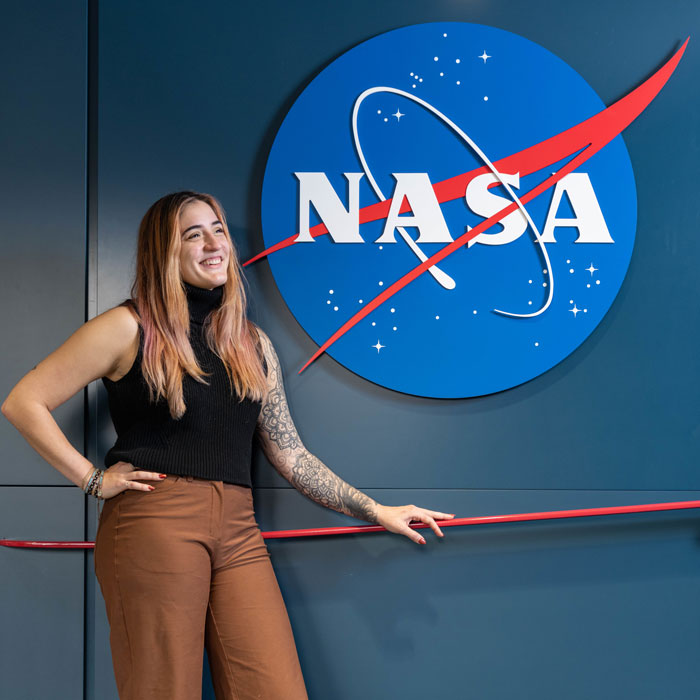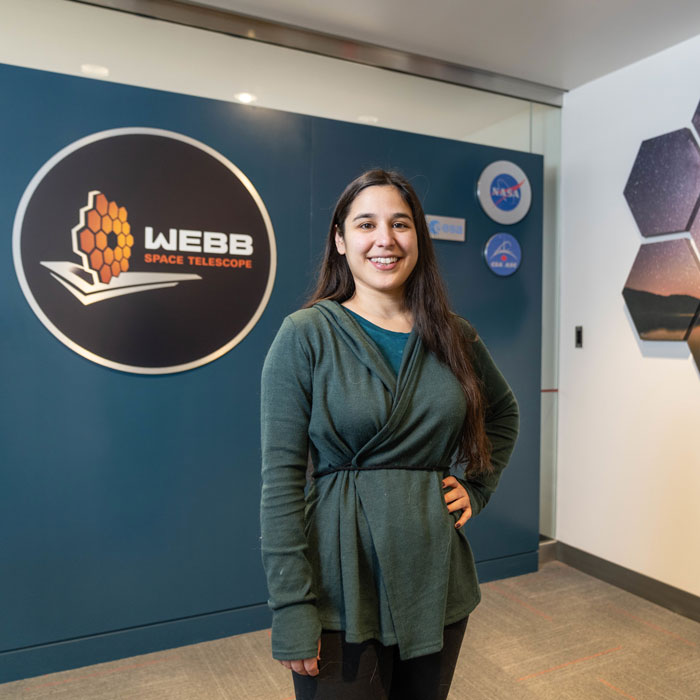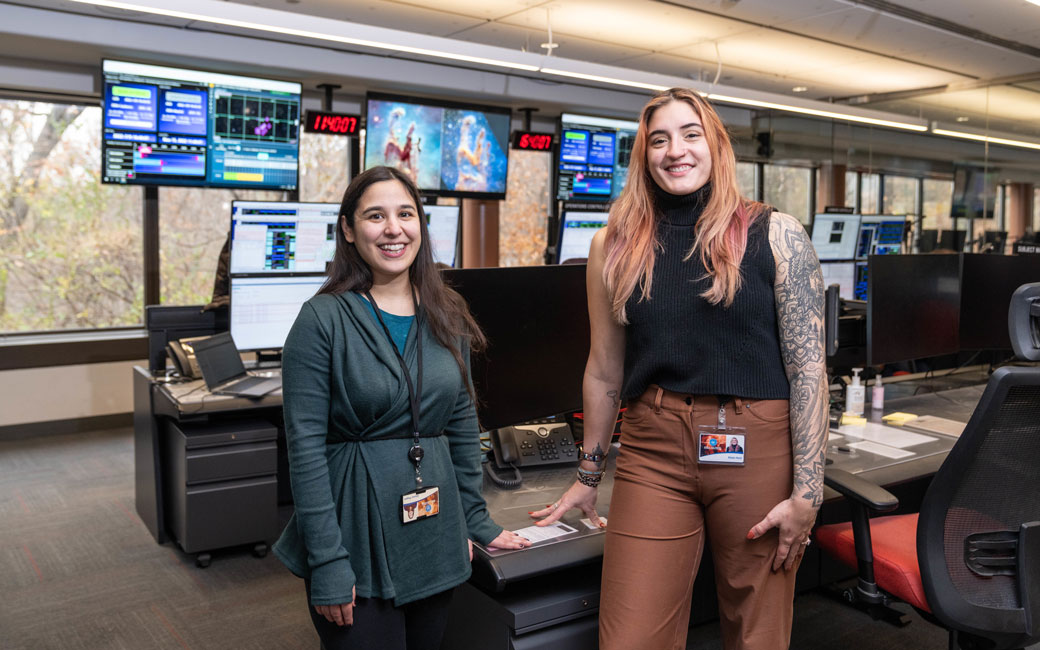TU alumnae help bring space to life at James Webb Space Telescope
Kielan Hoch ’16, Alyssa Pagan ’11 help others see the stars at the Space Telescope Science Institute
By Henry Basta, Ron Santana & Kyle Hobstetter on April 17, 2023
Since launching on Dec. 25, 2021, the James Webb Space Telescope (JWST) has given Earth an up-close view of the wonders of the universe.
It is the largest optical telescope in space and is equipped with high-resolution and high-sensitivity instruments that transmit images back to Earth, allowing scientists to view objects too old, distant or faint for previous telescopes.
And two Towson University alumnae have made it possible by working at the Space Telescope Science Institute (STSci) on the campus of Johns Hopkins University.
Kielan Hoch (who received a bachelor's in physics from TU in 2016) is part of the Giacconi Fellowship program, which provides three
years of support for postdoctoral researchers in the fields of astronomy, astrophysics
or planetary science.

Hoch, who recently received her doctorate in physics from the University of California San Diego, researches direct imaging of exoplanets, which are planets outside the solar system.
Her research revolves around NIRSpec, one of the JWST’s scientific instruments—a multi-object spectrograph capable of simultaneously measuring the near-infrared spectrum of up to 100 objects, like stars or galaxies, with low, medium and high spectral resolutions.
“What a bunch of us are doing in the high-contrast imaging community is figuring out how we can use a telescope to image exoplanets [when it] was made to look at faint, fuzzy things,” Hoch says. This research was part of JWST’s Cycle 1 proposal of observations and research. She is currently working on a Cycle 2 proposal to expand upon her research.
She admits she didn’t grow up looking at the stars and wanting to be an astronomer. Hoch actually wanted to be an artist, starting her TU journey as a dance major.
But after deciding dance wasn’t going to be her career path, she looked at the majors TU offered. That led her to the physics department and a discussion with Associate Professor Thomas Krause.
“I'm telling him I'm from an arts background, have no math [experience] whatsoever, but I'm super interested in how the universe works and everything he was talking about,” Hoch laughs. “And he was like, ‘I think you can do the physics major.’”
Over the years, Hoch has also worked as an adjunct faculty member in the Department of Physics, Geosciences and Astronomy.
As she’s helped others reach for the stars, in the classroom or through her research, Hoch likes to reminisce about how important her time at TU was. “Towson has a very special place in my heart,” she says. “After leaving to go to grad school, I realized Towson is a little bit of an anomaly with the physics department being so diverse and so supportive. They really cultivated such an amazing environment.”

Fellow TU alumna Alyssa Pagan ’11 has a similar background. She graduated from Towson University with a bachelor’s degree in art and design with a concentration on illustration.
She works as a science visuals developer at STSci, which means she takes the images captured by the James Webb and Hubble telescopes and processes them for public viewing.
After graduating from TU, Pagan earned a bachelor’s degree in astrophysics from the University of Maryland, College Park. From there she searched for a way to combine her passion for science and art. That’s when she discovered the STSci.
“I kept trying to apply, and then this position came available,” Pagan says. “It was like a list of all these skills that had art and astronomy, and I was like, ‘This is the job.’”
And it has become a dream job for Pagan. She takes the black and white data from Hubble and JWST and uses filters to translate those images into color for the visible spectrum. One of the best, and most impressive examples, was of the “Pillars of Creation,” which showed new stars are forming within dense clouds of gas and dust.
But what’s unique about her job is that Pagan is one of the first to see the data from the far reaches of space.
“It's such an honor to be one of the people that gets to see the data for the first time and make it more accessible,” she says. “It's so important because I'm so excited about the science, and I want to help other people get excited regardless of their scientific literacy.”
Pagan likes to joke that one day the “other shoe will drop” and someone will come take her job away from her. But until then, she’s excited to continue to produce jaw-dropping images of the outer reaches of space.
She’s also still excited to find ways to scratch her itch of being both an artist and a scientist.
“It's just like such an honor to be part of a team of like so many talented people,” Pagan says. “I get to work closely with scientists to produce this grand, full-color image that's hopefully compelling but also informative.
